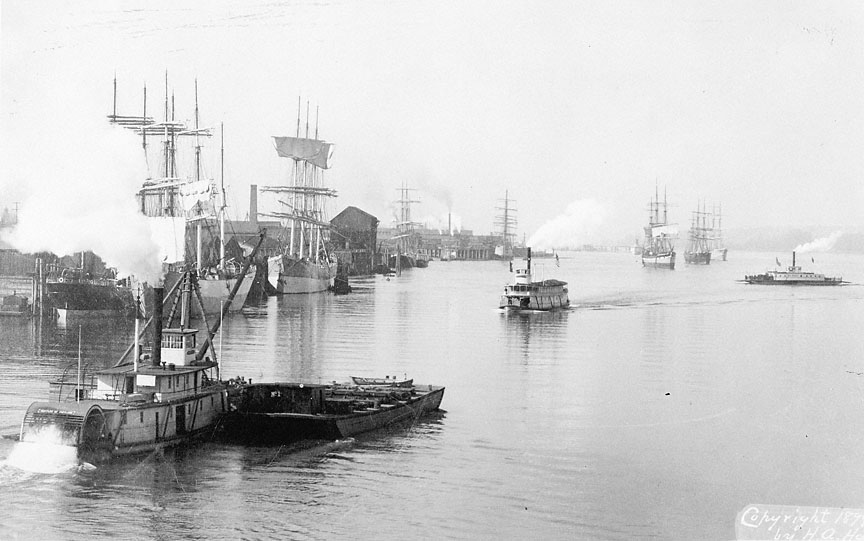- Catalog No. —
- OrHi 53097B
- Date —
- 1899
- Era —
- 1881-1920 (Industrialization and Progressive Reform)
- Themes —
- Transportation and Communication
- Credits —
- Oregon Historical Society
- Regions —
- Portland Metropolitan
- Author —
- H.A. Hale
Portland Harbor, 1899
This 1899 photograph shows steam-powered sternwheelers and sailing ships in Portland’s Willamette River harbor. The photograph, which was also made into a postcard, was taken by Herbert A. Hale, who worked as a photographer in Portland between 1892 and 1920.
At the turn of the nineteenth and twentieth centuries, Portland was the largest city in the Pacific Northwest. Portland’s naturally advantageous location near the confluence of the Willamette and Columbia Rivers gave its merchants access to both inland farming regions and foreign markets. Steamboats and railroads transported farm products and natural resources from Idaho, eastern Washington, and Oregon to Portland. From there, they were loaded onto sailing ships for markets in Asia, the eastern United States, and Europe. Portland also served as the gateway for incoming trade goods to the region.
In 1891, the state legislature created the Port of Portland Commission for the main purpose of dredging a Columbia River shipping channel from a depth of seventeen to twenty-five feet. In the following years, the port continued to deepen the channel to accommodate larger ships. In the 1920s, the Port moved the main Willamette River shipping channel from the east to the west side of Swan Island. The port used sand dredged from the river to fill in much of Guild’s Lake, a shallow marsh that served as the location for the 1905 Lewis and Clark Exposition.
In 1976, the port and the U.S. Army Corps of Engineers deepened the Columbia River shipping channel to forty feet. Currently, Port officials would like to deepen the channel another three feet to allow larger ships to access the city. If approved, the Army Corps will manage the project, which would be funded by the federal government, Oregon, and Washington. The project has an estimated cost of more than one-hundred million dollars.
Written by Kathy Tucker, © Oregon Historical Society, 2003.
